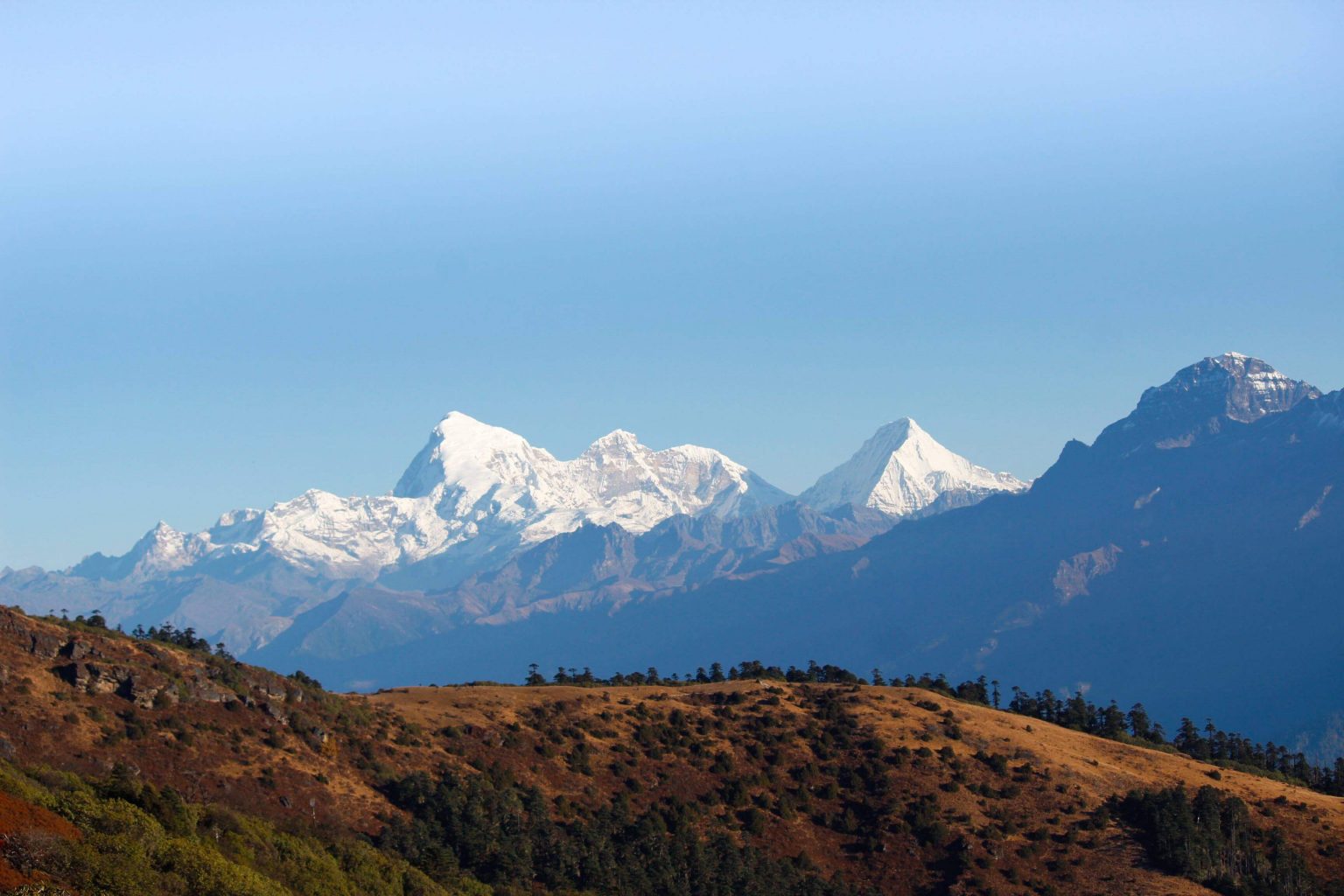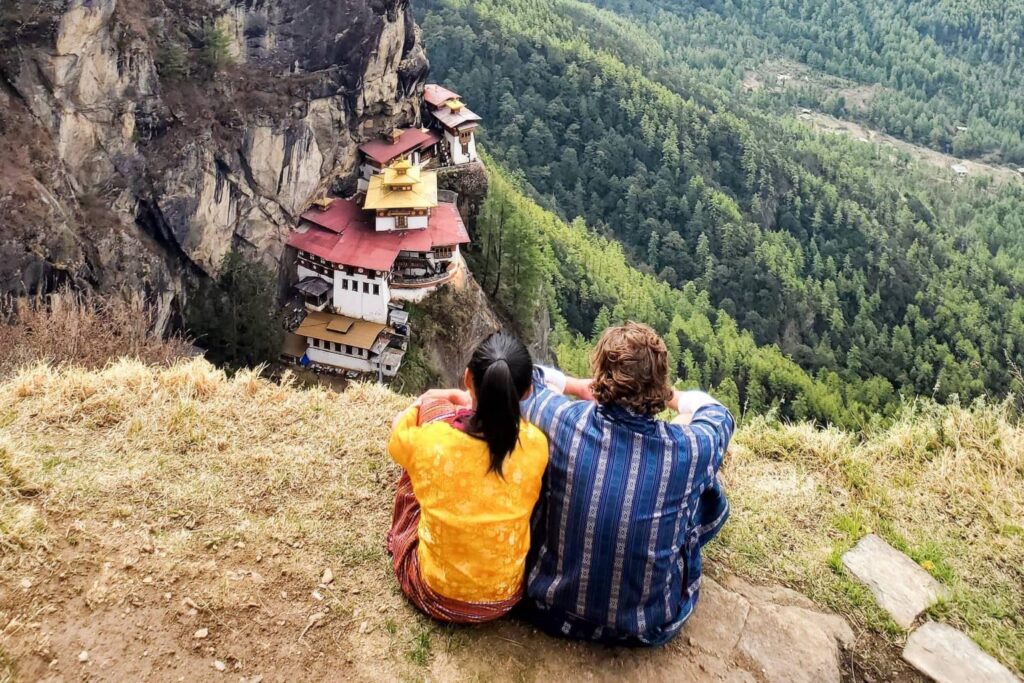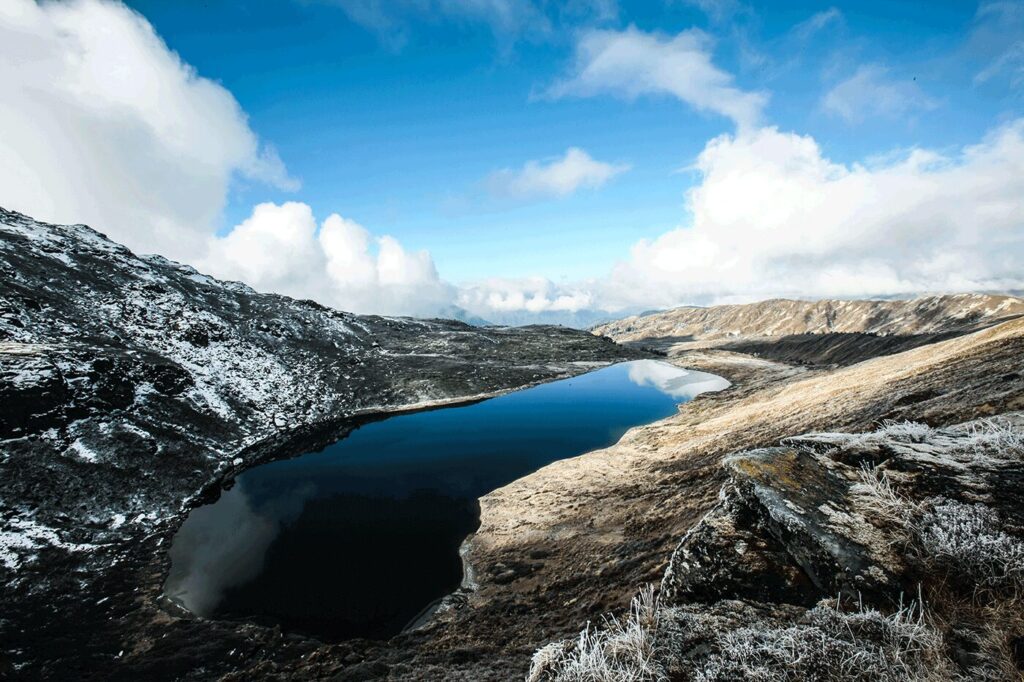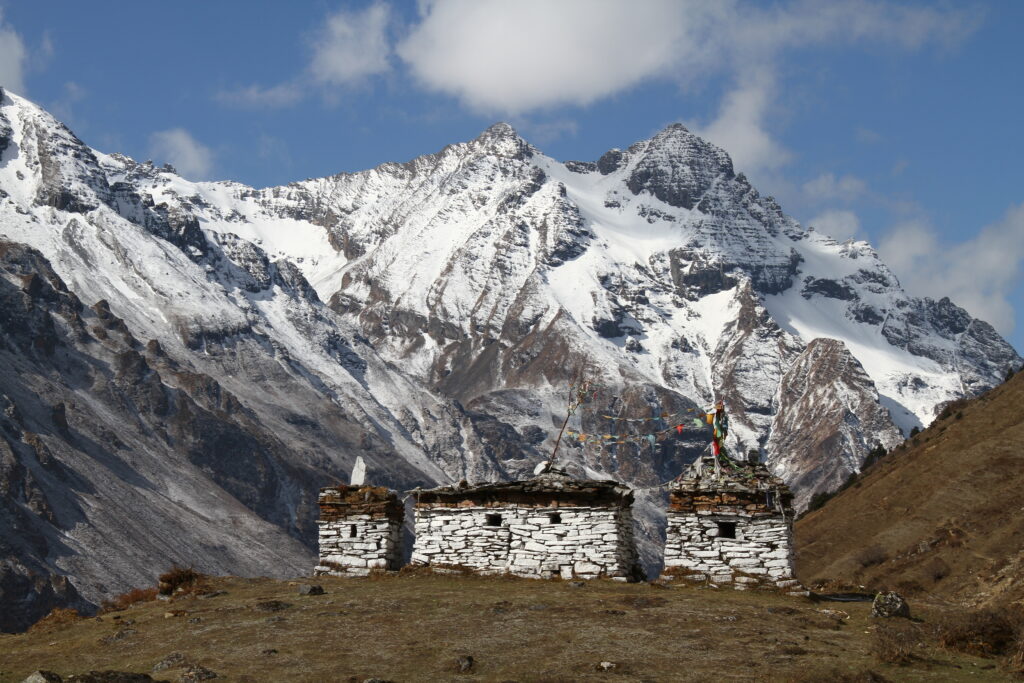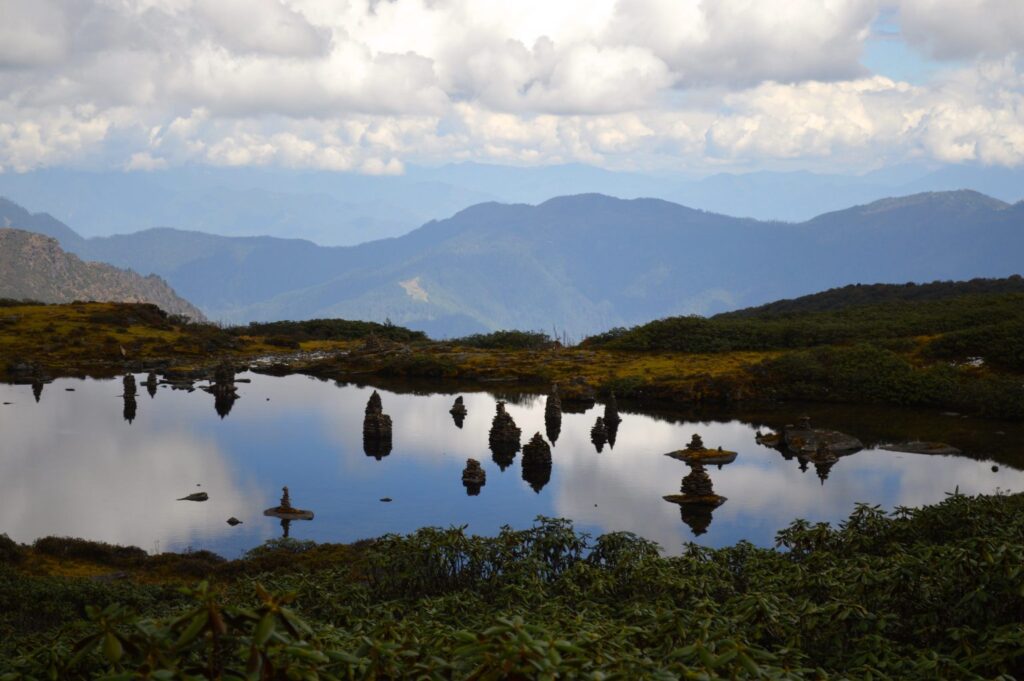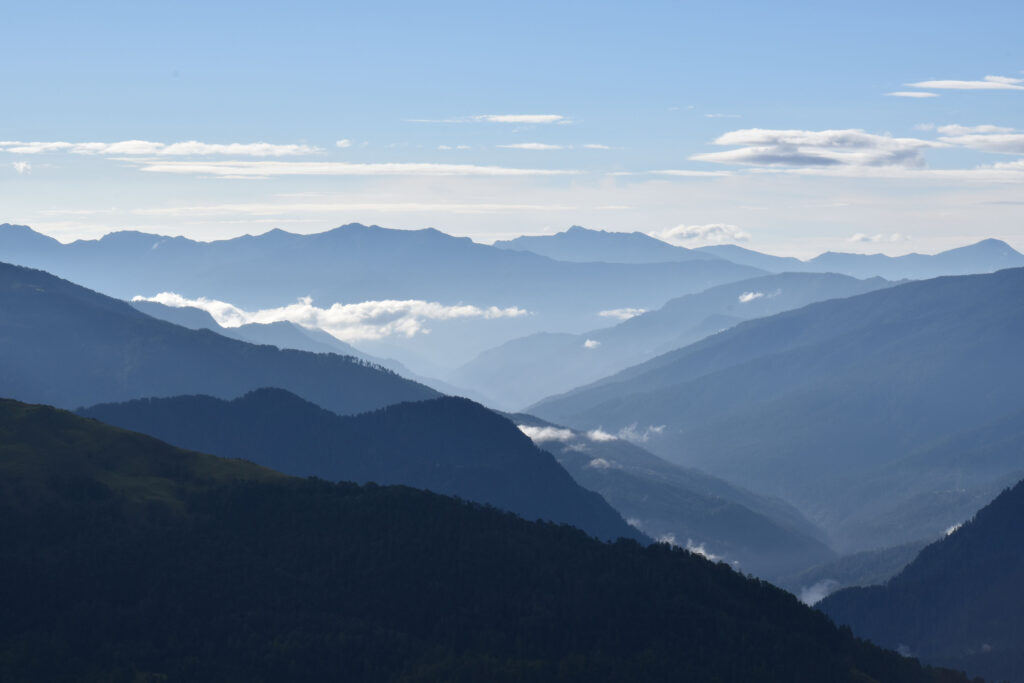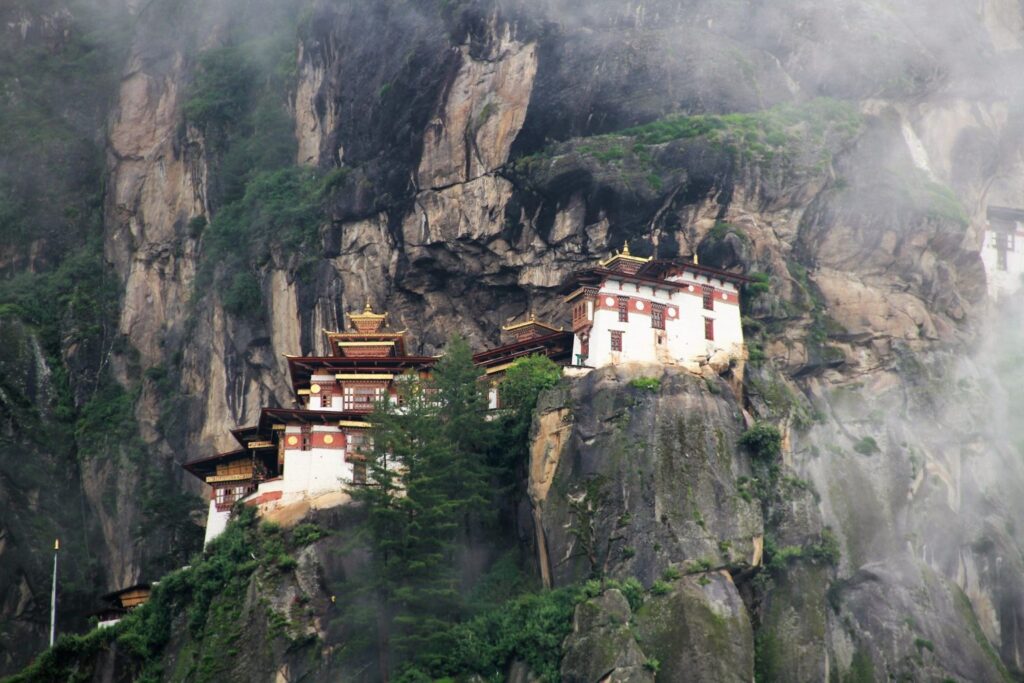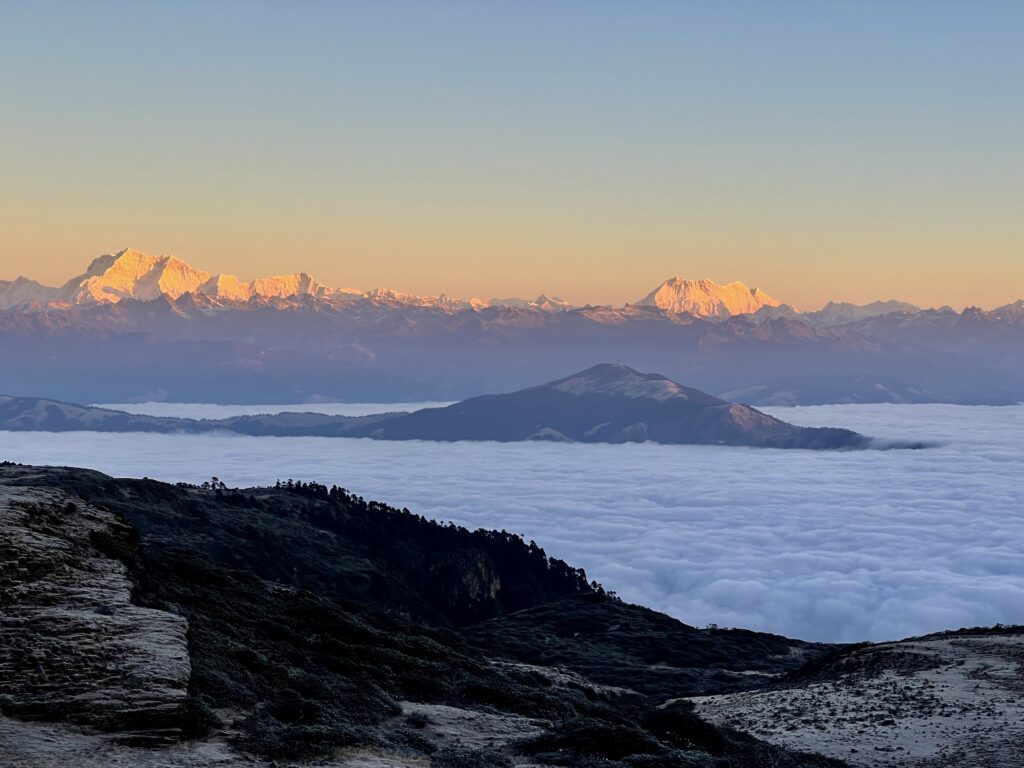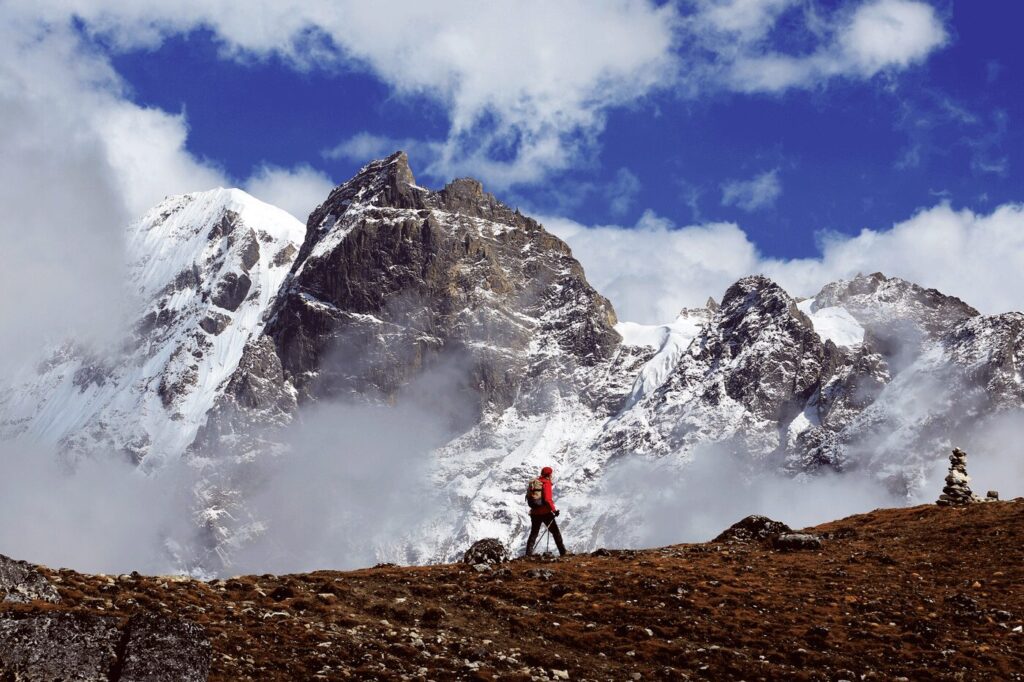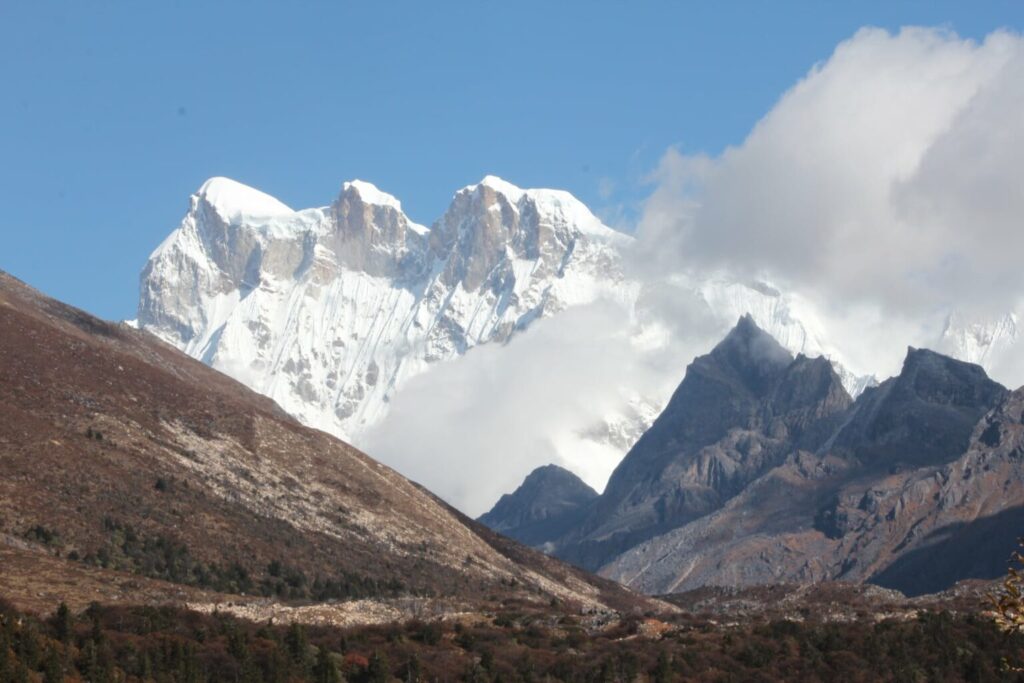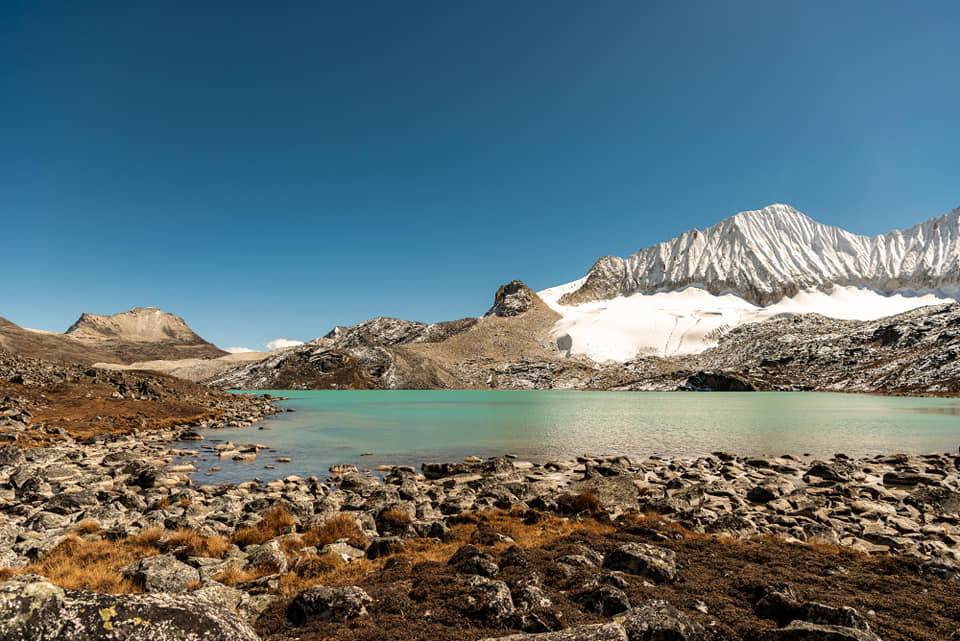Day 01: Arrival in Paro
You will arrive at the Paro International Airport. Enjoy the view from above by looking out of the plane window, you will be met with a breathtaking bird-eye view of the snowcapped Himalayan ranges. That is Bhutan’s impressive “Hello” to all visitors!
After meeting your guide and checking in your hotel, we will have some time and then the exciting adventure will begin. We’ll first visit Paro Rinpung Dzong (Fortress on a Heap of Jewels) – the most famous and important landmark in town. The building served as the meeting hall for the National Assembly. Today it houses the monastic body and district government offices, including the local courts, like most dzongs in Bhutan. Scenes from Bernardo Bertolucci’s 1993 film Little Buddha were filmed at Paro Rinpung Dzong.
Next, we will see the extensive collections of The National Museum of Bhutan, or Ta Dzong, as it was a former watchtower and only renovated in 1968. This is the best place to learn about Bhutan and its culture, you will find here collections of thangkas, bronze statues, Bhutan’s traditional dress, etc., and its most revered treasures, including a stone egg laid by a mule and a ritual dagger of the great protector Dorje Lekpa.
We will then do a leisure hike along the forested hillside to explore Zuri Dzong. The 1-hour hike (Distance 3 km; Elevation: max (2,560m), min (2,400m); Ascent: 160m; Descent: 160m) offers stunning views of Paro valley and the dzong. You will have the cool fresh air when walking through the forest of cypress and pine trees.
Zuri Dzong is regarded as one of the oldest dzongs in the country, dating back to 1352. This is home to the valley’s local protector. Thanks to its location up the hill, this is a great spot for sightseeing and capturing memorable pictures of nature. The hike will end once we reach Paro Cantilever Bridge.
We will stay overnight at the hotel in Paro.
Day 02: Paro sightseeing
Paro Taktsang or Tiger’s Nest as it is commonly called, is one of the most prominent sites in the Himalaya. The striking building overlooks the whole valley from its position on the side of a sheer cliff, approximately 900m above the valley floor. The monastery is one of the most sacred sites in the country, it has an important role in the life of the Bhutanese, and it is said that no trip to Bhutan is complete without a trek to the Tiger’s Nest. Plus, the views from here are breathtaking.
The hike will take 4-5 hours in total, so we will have short breaks along the way, for both refreshments and sightseeing. You will be accompanied with a mesmerizing landscape of lush forests and great Himalayan mountains with their white “hats”. The wonderful landscape and pristine nature will make you understand why trekking in Bhutan is an experience like no others!
In the afternoon, we will head out to see Drukgyel Dzong, or the ruins of the dzong to be exact. This is considered the most renowned and attractive archeological site in Bhutan. The site was built in 1649 and completed its mission of protecting the valley from external invasions, until it was destroyed by fire in 1951. Wandering between the ruins of the historic dzong, you will feel like taking a step back in time of war and reliving the glorious past.
We will return to Paro town and stay for another night.
Day 03: Paro – Haa
- Altitude in Haa: 2,700m
- Distance: 70km
- Estimated travel time: 2,5hrs
Say goodbye to the lovely Paro valley, we will hit the road and drive to Haa valley, one of the most remote and sacred valleys in Bhutan.
Haa town sits next to Haa Chhu river and can be divided into two sectors – the northern part with the central bazaar, and the southern occupied by a Bhutanese army camp and an IMTRAT (Indian Military Training Team).
On arrival in Haa, we will visit Lhakhang Nagpo (Black Chapel), and there is another one named Lhakhang Kharpo (White Chapel), two of the oldest temples in the valley. Local legend has it that when the Tibetan King Songtsen Gampo was seeking auspicious locations for the new temples, he released one black pigeon and one white pigeon, and where the temples are now being the locations where the two birds landed. Both temples stand at the foothill of the venerated Meri Puensum.
The inner shrine of Lhakhang Nagpo has a statue of Jowo Sakyamuni wearing a lovely crown and jewels. You’ll also find here a shrine to the red-faced protector Drakdu Tsen beside a trap door leading to the underground pool of a tshomen (mermaid spirit). There are the clay representations of the valley’s three sacred mountains.
After that, we will take on the Juneydrak Hermitage hike from Katsho village, about 1km north of Haa valley. We will walk for 40 minutes and first pass the Chorten Dangrim mani (prayer) wall then cross the stream. Next, we will reach a chorten which marks the entry to the hermitage. The caretaker of the chorten will give you access to the Lhakhang. Hike up the steep steps before squeezing between a stone entryway, guarded by the rock painting of a green-faced demon.
You’ll see a rough trail below the hermitage, which curves around the exposed bluff and leads to Katsho Goemba, from where we can have nice views over Katsho village. If there is time, it is also a good idea to visit the goemba to admire the fine antique thangkas inside.
It is otherwise possible to hike Juneydrak from Wangtsa village, following the main path near Dangrim chorten, this will take approximately 2.5 hours.
Tonight, we will rest at the hotel in Haa town.
Day 04: Talung village – Sagala
- Distance: 6km
- Estimated time: 3-4hrs
- Camp altitude: 3,200m
- Ascent: 700m
Enjoy breakfast and then drive for 30 minutes to the Talung village, where we will start the Chelela pass trek – the highlight of this trip.
Following the trail on the right side of the village, we will gradually walk up through yak herders camp until we reach two different paths. The highest altitude today is 3,600m. The trail will take you through the biological corridor of Jigme Khesar Strict Nature Reserve and Jigme Dorji National Park. Enjoy fresh air, pristine nature, and encounter some birds such as sparrow, Himalayan monal, and Blood pleasant while walking, you will really find yourself.
We will take the right trail to make the final hike towards the camp at Sagala at an altitude of 3,200m.
Day 05: Sagala to Ningula
- Distance: 9km
- Estimated time: 6hrs
- Camp altitude: 3,900m
- Ascent: 300m
- Descent: 250m
From the camp, we’ll hike up for 30 minutes and reach Sagala pass (3,685m) and enter the Jigme Dorji National Park. If the weather is good, you will have the stunning views of Mount Jomolhari (7,314m) and Mount Jichu Drake (6,989m). Continuing on the right side of the trail, after some ascents and descents and a walk through areas of rhododendrons and meadows, we will finally get to the top of the ridge at 3,800m (Ningula pass). The view of Haa valley and Paro from this location can only be described as breath-taking. After some walk through forests of hemlock and Jupiter, we will be at today’s camp at 3,900m, the highest campsite of this trek.
Day 06: Ningula to Chelela pass and drive to Thimphu
- Distance: 11km
- Estimated time: 5hrs
- Ascent: 300m
- Descent: 220m
Today we will get to Chelela pass. Hike along the ridge through meadows and yak herder’s camp, we will go uphill and through the rhododendron forest toward Kung Karpo Sky Burial at 4,200m (Kung Parpo pass, the highest pass of this trek). Reward yourself with the spectacular view of the picturesque Haa valley while hiking up through the stone cairns to Kung Karpo. On a clear day, you will enjoy a beautiful view of Mount Kangchenjunga (8,586m), the third-highest mountain in the world and lies in the border region between Nepal and Mangan district, Sikkim state of India.
The trail will ascend and descend a few times and we will be accompanied by the spectacular panorama view of Paro valley on the left and Haa valley on the right. The sight of Kila Goemba Nunnery below is also just as stunning. We’ll walk further downhill until we arrive at Chelela pass at 3,990m. This is one of the highest mountain passes in Bhutan. A car will be waiting to transfer you to Thimphu.
Day 07: Thimphu sightseeing and drive back to Paro
Welcome to the beautiful capital of Bhutan! Thimphu is a town of interesting juxtaposition, where you’ll see ancient landmarks right next to modern shops and restaurants.
The first place we will explore is the National Memorial Chorten. It is dedicated to world peace and prosperity, and later became a memorial to the Third King His Majesty Jigme Dorji Wangchuk. This Tibetan-style building is one of the most iconic religious edifices in Thimphu and is the focus of daily worship for many Bhutanese.
The next visit will be Buddha Point, a massive statue at a height of 51.5m, one of the largest in the world. The giant sculpture, with thousands of smaller Buddha statues inside, emanates an aura of peace and happiness to the entire world. The location of Buddha Point also allows us to enjoy the scenic landscape of Thimphu.
Today’s last destination will be Tashichho Dzong (Fortress of The Glorious Religion). The dzong was first constructed in 1216 A.D and had gone through expansion and reconstruction over the years. The prominent dzong is located close to Thimphu town, next to the banks of Wang Chhu River. Remember to watch the captivating scene of flag changing at 5pm. The ceremony begins in the courtyard and ends outside in the front of the dzong.
We will drive back to Paro and stay there for the night.
Day 08: Depart Paro
We will head to the airport after breakfast for your flight to your next destination, marking the end of your Bhutan journey. Tashi Delek (goodbye and good luck) and hope to see you again!

